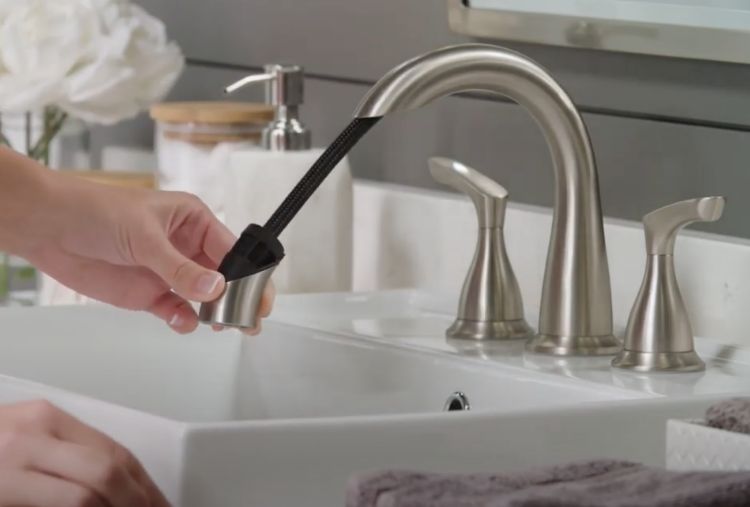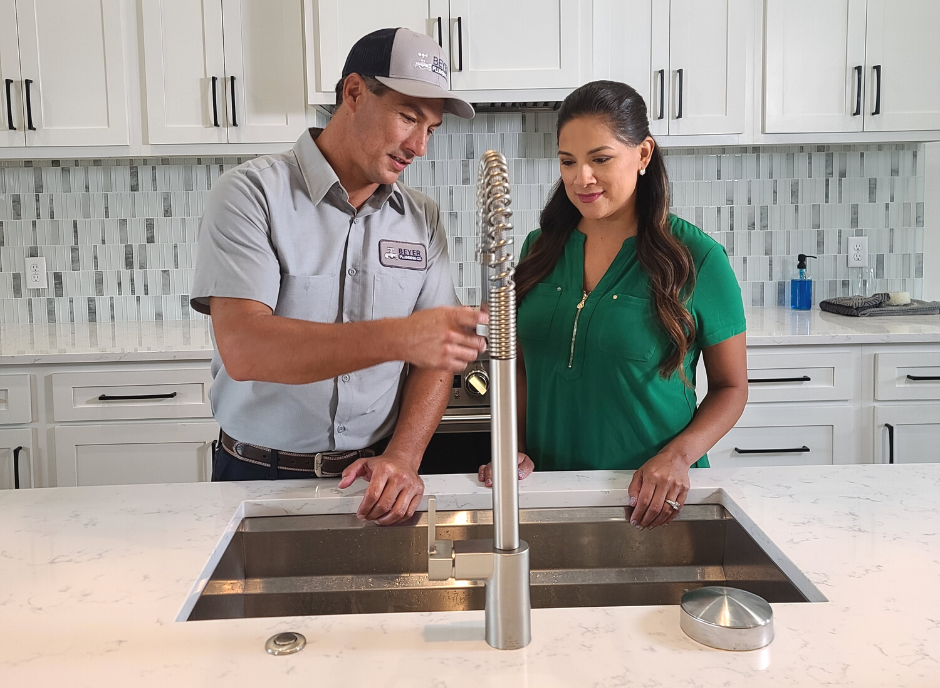An Reasons Behind Resolving a Malfunctioning Faucet
An Reasons Behind Resolving a Malfunctioning Faucet
Blog Article
Here below you can find more helpful points about What Causes Leaky Faucets & How To Fix Them.

Dripping faucets may look like a small hassle, but their effect surpasses just the aggravation of the audio. From drainage to sustaining unneeded monetary costs and wellness dangers, disregarding a dripping faucet can cause numerous consequences. In this short article, we'll delve into why it's essential to resolve this common house issue promptly and efficiently.
Wastage of Water
Environmental Impact
Leaking faucets contribute substantially to water wastage. According to the Epa (EPA), a solitary tap trickling at one drip per second can throw away greater than 3,000 gallons of water annually. This not just stress water resources but also affects ecosystems and wildlife dependent on them.
Financial Costs
Increased Water Bills
Past the ecological effect, dripping faucets can inflate water costs considerably. The built up waste over time equates right into greater energy expenditures, which can have been stayed clear of with prompt fixings.
Possible Residential Or Commercial Property Damage
Moreover, long term trickling can bring about damage to components and surface areas surrounding the faucet. Water accumulation can create discoloration, corrosion, and also architectural concerns if left ignored, leading to additional repair service expenses.
Wellness Worries
Mold And Mildew and Mildew Growth
The consistent presence of dampness from a trickling tap produces an excellent setting for mold and mildew and mildew development. These fungi not just compromise interior air quality yet also posture health dangers, particularly for individuals with respiratory system conditions or allergic reactions.
Waterborne Diseases
Stationary water in trickling faucets can end up being a breeding ground for germs and various other virus, enhancing the threat of waterborne conditions. Impurities such as Legionella germs flourish in stationary water, possibly leading to severe illnesses when consumed or inhaled.
Do it yourself vs. Expert Repair service
Pros and Cons of Do It Yourself Repair
While some might attempt to repair a trickling tap themselves, DIY repair work include their very own collection of challenges. Without appropriate understanding and tools, do it yourself efforts can aggravate the issue or result in insufficient fixings, lengthening the trouble.
Advantages of Hiring a Professional Plumber
Hiring a professional plumber ensures that the underlying root cause of the leaking faucet is attended to successfully. Plumbers have the proficiency and equipment to identify and repair tap concerns successfully, conserving time and lessening the danger of additional damages.
Step-by-Step Guide to Repairing a Dripping Faucet
Tools Called for
Before attempting to fix a dripping faucet, collect the essential devices, including an adjustable wrench, screwdrivers, substitute components (such as washers or cartridges), and plumber's tape.
Common Tap Issues and Their Solutions
Recognize the kind of faucet and the specific concern triggering the drip. Common problems consist of damaged washers, corroded valve seats, or faulty O-rings. Describe maker directions or online tutorials for detailed support on repair work.
Preventive Measures
Normal Maintenance Tips
To prevent trickling faucets, execute routine upkeep such as cleaning up aerators, examining for leakages, and replacing damaged parts promptly. In addition, think about installing water-saving devices or updating to much more efficient components.
Significance of Prompt Services
Attending to dripping faucets as quickly as they're observed prevents additional water wastefulness and potential damages, ultimately conserving both water and money over time.
Influence On Building Value
Understanding of Well-Maintained Residential Or Commercial Property
Keeping a residential or commercial property in good condition, consisting of addressing maintenance concerns like dripping faucets, improves its perceived value and charm amongst potential purchasers or occupants.
Impact on Resale Value
Residences with well-maintained plumbing fixtures, including taps, command greater resale worths in the real estate market. Dealing with leaking taps can add to a favorable impact throughout residential or commercial property assessments and arrangements.
Ecological Duty
Individual Contribution to Conservation
Taking obligation for taking care of trickling faucets straightens with wider efforts toward water preservation and ecological sustainability. Every individual's actions jointly make a significant effect on protecting valuable resources.
Sustainable Living Practices
By prioritizing prompt repairs and adopting water-saving behaviors, people add to lasting living methods that benefit both present and future generations.
Conclusion
Dealing with a dripping faucet goes beyond plain ease; it's an important step toward preserving water, lowering monetary expenses, and securing health and wellness and building. Whether with do it yourself fixings or specialist help, acting to repair dripping taps is a little yet impactful way to advertise accountable stewardship of resources and add to a healthier, extra lasting future.
How to Fix a Dripping or Leaky Faucet
A leaking faucet is one of the most common problems that homeowners encounter, but it being commonplace doesn’t make it any less annoying. The constant drip drip drip of a leaking bathtub faucet, showerhead, or sink tap can disturb your home’s serenity. Left neglected, a dripping faucet can also result in higher water bills and discoloration or mold growth in your sink or plumbing fixtures.
Fortunately, you don’t have to be a trained plumber to know how to stop a dripping faucet. With some basic tools, replacement parts, and a little patience, leaky faucet repair is a breeze. In this article, we’ll explain what causes dripping faucets and how you can fix them.
What Causes a Leaking Faucet?
Kitchen and bathroom faucets come in all manner of designs, but most involve some combination of valves, O-rings, seals, and washers. The O-ring is usually the weakest link, but any one of these pieces can wear down over time. Heat, moisture, temperature fluctuations, minerals, mold, and movement can contribute to warping and corrosion, breaking the watertight seal. This just comes with the territory of being a homeowner. Everything is always subject to wear and tear, and some component parts of your appliances and fixtures need to be replaced on occasion. At least replacement O-rings are cheap!
More rarely, dripping faucets can be a symptom of excessively high water pressure. Were this the case in your home, you would probably notice that the leak is not isolated to one faucet. Water pressure issues are harder to resolve on your own. We recommend contacting a professional plumber if you suspect your water pressure is too high.
How to Fix a Dripping Faucet
Pipe wrench or monkey wrench Allen wrench set Screwdrivers Old towel or rag Shut off the water.
Before you do anything, you need to turn off the water to keep from drenching your kitchen or bathroom. You should find a valve under the sink and against the wall. Once you’ve turned this valve, try turning the faucet on to confirm that the water source has been cut off.
If you can’t locate your local valve for the faucet you’re working on, you can always shut off the water to the house at the main valve. Of course, this will prohibit anyone from using the sinks, showers, or toilets while you’re working on the faucet that’s giving you trouble.
Plug or block the drain.
You’ll be disassembling the faucet and removing some small bits of hardware. Plug the drain with a stopper or rag to avoid the possibility of a small screw falling into your P-trap.
Take apart the faucet assembly.
There are several varieties of kitchen and bathroom faucets, each with its own manner of assembly. For detailed instructions on how to disassemble your faucet, you can refer to the fixture’s manual or contact the manufacturer. If you know whether you have a ball, disc, cartridge, or compression faucet, you can find detailed schematics online.
In general, you need to begin by removing the faucet handles. You might notice a small screw that you’ll need to remove with a screwdriver or Allen wrench. If you don’t see any visible securing hardware, it’s likely hidden under a decorative cap that can be unscrewed or popped off with flathead screwdriver.
Remove each piece methodically, consulting a schematic when necessary. Take notes or arrange the pieces in such a way to make it easier to correctly reassemble the faucet later.
Remove the cartridge.
Once you’ve removed the handles and securing hardware, you should be able to remove the valve cartridge or stem. Some cartridges will slide right out. Other faucet models will require you to loosen a nut with a pipe wrench before you can remove the valve stem.
Examine the exposed hardware.
With the cartridge or stem removed, inspect the component parts. Check the rubber O-rings for wear and tear. Also examine the seat washer for corrosion or other damage. These pieces are usually the responsible parties for a dripping faucet, but it’s worth inspecting the other component parts while you have the faucet disassembled.
Find replacement parts.
Once you’ve identified which faucet component has failed, find an identical replacement. Your local hardware store should have O-rings, seat washers, and other standard components in stock. If you have a luxury or uncommon faucet, you may have to contact the manufacturer for a replacement part.
It’s a good idea to take your old parts with you to the hardware store so you can compare them with the store’s inventory and be sure you’re purchasing the correct replacement.
Reassemble the faucet.
With your new parts in hand, reconstruct the faucet and handles. Don’t be tempted to overtighten screws or nuts. You might think this could create a better seal, but it can instead damage or bend a delicate part of the assembly and create a new problem for you.
Turn on the water and test the faucet.
The only thing left to do is test your work. Unplug the sink, turn the water back on, and try the faucet. Congratulate yourself on a job well done!
https://www.libertyhomeguard.com/how-to-fix-a-dripping-or-leaky-faucet/

We are very excited about Why Is It Important To Fix Your Leaking Tap/Faucet? and I hope you appreciated our article. Sharing is good. You never know, you may just be helping someone out. Thank you so much for your time spent reading it.
Report this page